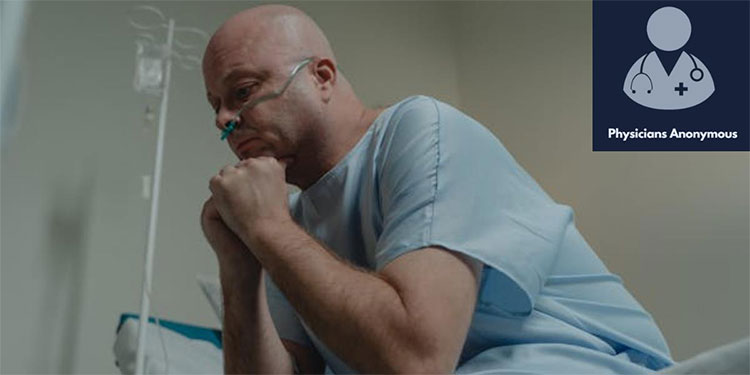
Private equity’s takeover of hospitals isn’t just a financial story — it’s a patient safety crisis. Studies show higher complication rates, more service closures, and rising costs after PE acquisitions. In the wake of the Steward Health Care collapse, it’s clear we need transparency, policy oversight, and a shift from profit-first to patient-first healthcare.
Let’s get this out of the way: private equity (PE) is not evil by definition. I’m sure there are some lovely PE partners out there who enjoy improving patient care AND the bottom line. But when PE buys your hospital, clinic, or physician practice – a seemingly unique beast found only in American commoditized healthcare — that’s when patients and clinicians start to feel the pain.
In the wake of the Steward Health Care crisis, corporate and private equity ownership of health care has come under new scrutiny. And frankly, it should. Because when the people running the hospital care more about EBITDA than about the ICU nurse who hasn’t peed since 7 a.m., bad things happen—for staff and for patients.
If you feel like everything around you is being bought, sold, and consolidated, you’re not imagining it. In the past decade, private equity firms have poured billions into health care, buying everything from dermatology practices to entire hospital systems (Harvard Chan School).
The PE model is simple: buy, squeeze, flip. They acquire a hospital or system, load it with debt (often through sale-leaseback deals where the real estate is sold off and leased back at inflated rates), and start “optimizing operations.” Spoiler: “optimizing” usually means fewer staff, cheaper supplies, and closing service lines that don’t generate enough revenue—even if those services are the only ones available in the community.
Steward Health Care is the poster child for what happens when this goes wrong: communities left without care, clinicians without jobs, and patients scrambling for alternatives when hospitals shut their doors overnight.
Let’s be very clear: this isn’t just a workforce problem or a “burnout” issue. This is a patient safety crisis. When ownership priorities shift from care to cash, patients feel it first—and hardest.
Multiple studies now show that PE-owned hospitals see higher rates of hospital-acquired conditions like bloodstream infections, falls, and surgical complications (JAMA). This isn’t magic—it’s math. Fewer nurses on shift means more missed vitals, more delayed meds, and more preventable errors.
I once had a patient who developed a pressure ulcer simply because we didn’t have enough staff to turn them as frequently as we should. That’s not a “quality metric.” That’s a human being who suffered needlessly.
Another big casualty: less profitable departments. Labor & delivery units, behavioral health, palliative care—all the things that don’t churn out big profit margins—are often first on the chopping block.
When Carney Hospital in Boston announced closure, patients were left scrambling for primary care appointments and specialty care. For many, it was the only accessible option. And it wasn’t just a hospital that closed—it was a lifeline.
PE likes to talk about efficiency, but somehow the bills always go up. Studies show that after PE acquisition, hospital charges per patient day rise significantly, even as staffing levels and quality of care fall (Harvard Chan School).
So, congratulations! You now get worse care for a higher price.
And who bears the brunt? Rural patients, Medicaid recipients, and communities of color. When a hospital closes in a wealthy suburb, people drive a few extra miles. When it closes in a rural town, people lose access to trauma care, obstetrics, and sometimes even basic emergency services. Outcomes worsen, mortality rises.
It’s tempting to villainize the individuals behind these firms, but the real problem is structural. PE funds are designed to return money to investors on a short timeline—usually three to seven years. That means aggressive cost-cutting, service consolidation, and revenue maximization are baked into the business model.
Here’s the catch: health care isn’t a widget factory. When you cut too deep, you don’t just make a cheaper product—you harm real people.
Debt servicing alone can bleed a hospital dry. Steward Health Care was reportedly paying hundreds of millions annually just in rent for the buildings it once owned. That money doesn’t go to hiring more nurses or upgrading equipment. It goes straight to landlords—often owned by the same PE firm that sold off the real estate in the first place.
If you’re a clinician working in a PE-owned hospital, you’ve probably already noticed the signs:
All of this takes a toll—not just on patient outcomes but on clinician mental health. I hear from physicians who feel trapped: they know care is getting worse, but speaking up feels risky when your employer is now a financial entity that doesn’t really understand—or value—the clinical perspective.
Here’s the part that breaks my heart: patients don’t know who owns their hospital. They don’t know that their favorite nurse just quit because the staffing ratios became unsafe. They just know that their wait times are longer, their bills are higher, and their care feels rushed.
Imagine being in labor, arriving at your local hospital, and discovering the maternity unit closed last month because it wasn’t profitable enough. Or taking your child to the ER and waiting six hours because half the nursing staff was cut.
That’s not just a bad day. That’s a system failing the very people it exists to serve.
This isn’t hopeless—but it will require policy, advocacy, and courage. Harvard Chan School experts suggest:
And let’s not forget the power of collective voice: clinicians, patients, and community leaders can advocate for accountability and demand a seat at the table when ownership decisions are made.
If you’re a physician, document what you see. Track metrics, patient harms, staff turnover. Data matters when advocating for change.
If you’re a patient, ask questions: Who owns this hospital? What’s being done to maintain quality and safety? Support journalism that investigates these issues—sunlight is still the best disinfectant.
And for all of us? We need to reject the idea that medicine can be run like a hedge fund without consequences. Because the consequences are already here—bedside, in the ICU, in our communities.
I’ll be honest: I’m not anti-business. I’m pro-patient. And when the business model consistently leads to worse outcomes, closures, and harm, we have to call it out.
The health of our patients—and the sanity of our clinicians—depends on ownership structures that value care over cash flow. Because at the end of the day, no one puts “increased EBITDA” on a thank-you card after you save their life.
Physicians Anonymous provides various services for physicians experiencing distress, burnout, mental illness, and addiction. All medical students and physicians are welcome to seek help.

A recovering physician who left medicine after burning out and more. Overachiever. Impostor syndrome. Addict. Had never heard of Corrigan's Secret Door* until it was too late. Co-founded Physicians Anonymous with intention to solve physician burnout, mental illness, and addiction. Hopes to prevent future medical career disasters through peer support, advocacy, policy change, and innovation. * http://stage4pa.physiciansanonymous.org/corrigans-secret-door-and-other-stories/